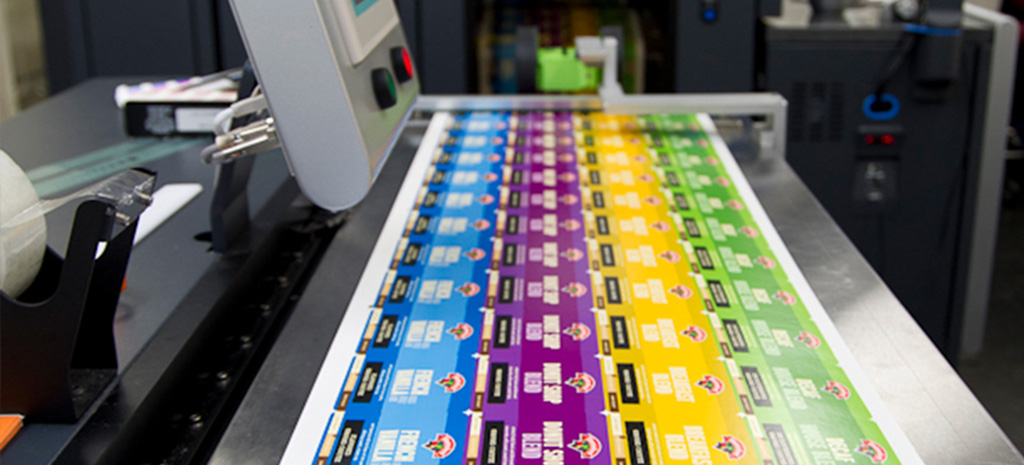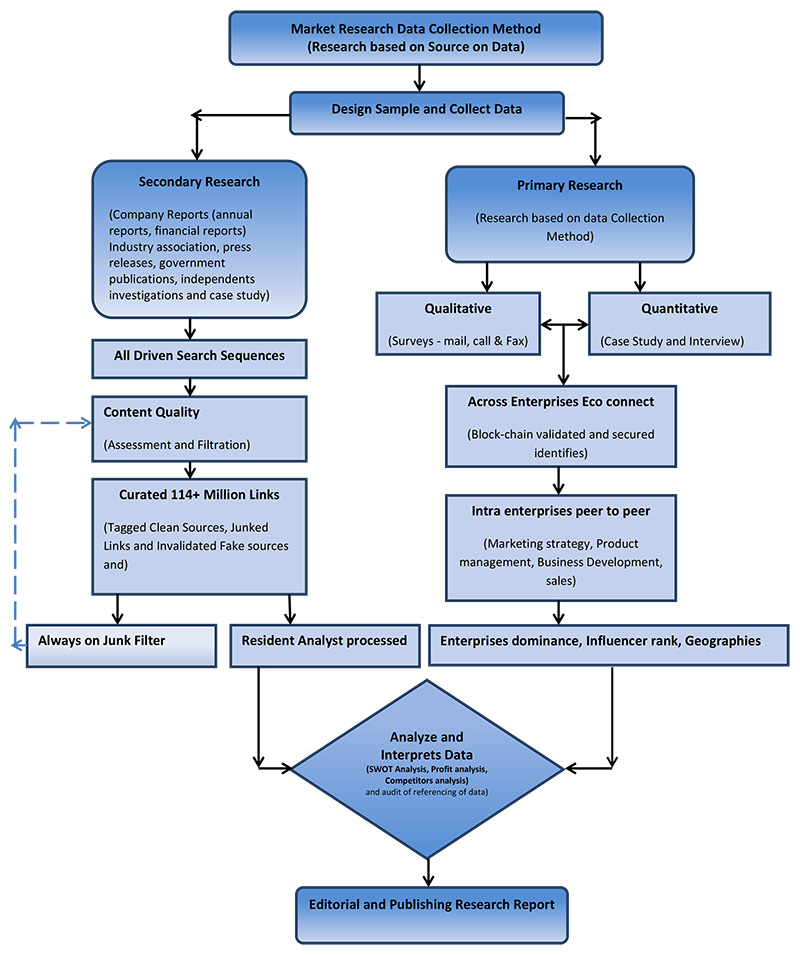Report Overview
- Understand the latest market trends and future growth opportunities for the Flexographic Printing industry globally with research from the Global Industry Reports team of in-country analysts – experts by industry and geographic specialization.
- Key trends are clearly and succinctly summarized alongside the most current research data available. Understand and assess competitive threats and plan corporate strategy with our qualitative analysis, insight, and confident growth projections.
- The report will cover the overall analysis and insights in relation to the size and growth rate of the “Flexographic Printing Market” by various segments at a global and regional level for the 2010-2028 period, with 2010-2021 as historical data, 2022 as a base year, 2023 as an estimated year and 2023-2028 as forecast period.
Description:
- The flexographic printing industry is poised for significant growth in the coming years. In 2023, it is projected to be valued at USD 8.7 billion, with expectations to surge to USD 10.6 billion by 2028. This impressive growth trajectory reflects a steady compound annual growth rate (CAGR) of 4.1% from 2023 to 2028.
- A key driving force behind this expansion is the burgeoning consumer goods sector, which plays a pivotal role in bolstering the printing and packaging industries. With increased consumer purchasing power and a growing appetite for diverse consumer products, there is a heightened demand for packaging solutions, labels, and various printed materials. This surge in demand creates lucrative opportunities for the flexographic printing sector to meet these evolving market needs effectively.
- In the changed post COVID-19 business landscape, the global market for Flexographic Printing Machine estimated at US$2.7 Billion in the year 2022, is projected to reach a revised size of US$3.7 Billion by 2030, growing at a CAGR of 4.3% over the period 2022-2030. Stack Press, one of the segments analyzed in the report, is projected to record 4.7% CAGR and reach US$1.7 Billion by the end of the analysis period. Taking into account the ongoing post pandemic recovery, growth in the In-Line Press segment is readjusted to a revised 4.2% CAGR for the next 8-year period.
- The Flexographic Printing Machine market in the U.S. is estimated at US$720 Million in the year 2022. China, the world`s second largest economy, is forecast to reach a projected market size of US$780.9 Million by the year 2030 trailing a CAGR of 6.9% over the analysis period 2022 to 2030. Among the other noteworthy geographic markets are Japan and Canada, each forecast to grow at 2.4% and 3.7% respectively over the 2022-2030 period. Within Europe, Germany is forecast to grow at approximately 3.1% CAGR.

Report Statistics:
- Unit Sales, Average Selling Prices, Market Size & Growth Trends
- COVID-19 Impact and Global Recession Analysis
- Analysis of US inflation reduction act 2022
- Global competitiveness and key competitor percentage market shares
- Market presence across multiple geographies – Strong/Active/Niche/Trivial
- Online interactive peer-to-peer collaborative bespoke updates
- Market Drivers & Limiters
- Market Forecasts Until 2028, and Historical Data to 2015
- Recent Mergers & Acquisitions
- Company Profiles and Product Portfolios
- Leading Competitors
Flexographic Printing Market Drivers:
The packaging sector is experiencing robust growth driven by the rising consumer appetite for packaged products. This uptick in demand is playing a pivotal role in fueling the need for flexographic printing, which finds extensive application in producing packaging materials like labels, cartons, bags, and flexible packaging.
Furthermore, the packaging industry is in a state of continuous evolution, with emerging trends such as the booming E-commerce and online shopping landscapes. These trends have led to a sharp increase in the demand for packaging materials that not only safeguard products but also ensure their secure delivery to consumers.
Additionally, there is a growing emphasis on environmental sustainability, with companies increasingly seeking eco-friendly packaging solutions. This heightened awareness regarding the environmental impact of packaging choices has further contributed to the growth of the packaging industry.
Flexographic Printing Market Restraints:
The flexographic printing market faces certain constraints, primarily related to labor costs and the availability of a skilled workforce. Operating flexographic printing equipment necessitates the presence of knowledgeable and experienced operators who possess the expertise required to effectively manage the printing process and conduct necessary maintenance tasks.
The challenges associated with labor costs and workforce expertise can indeed hinder the flexographic printing market’s growth. This is because flexographic printing involves intricate machinery, plate-making procedures, ink formulation, and meticulous color management. Skilled operators play a critical role in ensuring the printing process operates smoothly, efficiently, and consistently delivers high-quality results.
To overcome these challenges and enhance market competitiveness, it is imperative for businesses to make substantial investments in workforce training. Therefore, the accessibility of a skilled workforce and the associated labor costs have a direct impact on the efficiency, quality, and overall competitiveness of the flexographic printing market.
Flexographic Printing Market Opportunity:
Customization and personalization in packaging present significant opportunities within the flexographic printing market.
Flexographic printing empowers businesses to craft unique and distinctive designs and branding, allowing them to truly stand out in the competitive market landscape. This distinctiveness aids brands in setting themselves apart and establishing a strong and memorable presence in the minds of consumers.
The flexibility inherent to the flexographic printing process is particularly well-suited for producing customized packaging solutions that align with consumer preferences based on factors such as target demographics, special events, or seasonal trends. Flexographic printing can seamlessly incorporate variable data printing, enabling the integration of individualized text, images, and QR codes. This capability proves invaluable for promotional campaigns, personalized messages, and the creation of serialized labels.
Furthermore, the efficiency of flexographic printing extends to the feasibility of producing small batches of customized products. This ability to cater to niche markets and micro-targeted audiences enhances the market’s capacity to meet specific consumer demands effectively. Overall, customization and personalization in packaging represent a promising avenue for growth within the flexographic printing industry.
Flexographic Printing Market Challenges:
Challenges in the flexographic printing market stem from the shifting demands in the industry.
One of the primary challenges arises from the evolving preferences of consumers concerning packaging design, materials, and sustainability practices. There is a growing demand for flexographic printers to provide solutions that align with these changing consumer expectations. Additionally, the surge in e-commerce has introduced unique packaging requirements, such as designs optimized for shipping and creating memorable unboxing experiences. Flexographic printers must adapt to these specialized needs to effectively serve e-commerce businesses.
Furthermore, there is a noticeable trend toward shorter print runs and on-demand printing. This necessitates that flexographic printers optimize their processes to efficiently accommodate smaller production quantities, ensuring flexibility and responsiveness to market demands. Moreover, brands have become increasingly price-sensitive due to economic fluctuations, putting pressure on flexographic printers to strike a balance between cost-effective solutions and delivering high-quality, visually appealing printed materials. Navigating these shifts in market demand poses challenges that require innovative solutions within the flexographic printing industry.
Global Flexographic Printing Market Outlook 2023:
The flexographic printing market has seen significant developments and trends in recent years, which are poised to shape its future dynamics. This report provides a concise overview of key findings and insights from the market research.
- Dominance of Corrugated Packaging
- In 2022, corrugated packaging emerged as the dominant sector within the flexographic printing market.
- This trend is expected to persist in the foreseeable future.
- Corrugated packaging plays a pivotal role in flexographic printing, particularly for packaging materials like corrugated boxes.
- Such packaging is extensively used for shipping and storing products, and flexographic printing enables direct branding, product information, logos, barcodes, and more on these boxes.
- Key players in corrugated packaging include Bobst (Switzerland), Heidelberger Druckmaschinen AG (Germany), and Nilpeter A/S (US).
- Wide Web Flexographic Printing Machines
- The wide web flexographic printing machine segment is projected to dominate the market in terms of market size.
- Wide web printing is known for its efficiency in producing large-scale packaging materials and printed products.
- This technology is ideal for industrial-scale applications, particularly for bulk items such as grains, cement, and industrial goods.
- It offers cost-effective solutions for large print runs, contributing to lower costs per unit.
- Integration with digital printing technologies for variable data and customization is also a notable feature.
- Rapid Growth in Flexible Packaging
- The flexible packaging application segment is expected to witness the highest growth rate in the flexographic printing market.
- Flexible packaging is characterized by materials that can be easily molded, folded, or bent.
- It offers advantages in terms of convenience, preservation, and sustainability.
- Flexible packaging caters to diverse industries, including food, beverages, personal care, and pharmaceuticals.
- Materials used in flexible packaging include plastic films, aluminum foil, paper, and laminates, offering barrier properties to protect contents from external factors like moisture and light.
- Asia Pacific as the Fastest Growing Market
- The Asia Pacific region is projected to experience the most rapid growth in the flexographic printing market.
- Key countries in this region include China, Japan, South Korea, India, and others.
- This growth is driven by the demand for quality, efficiency, and innovation in the packaging industry.
- Factors contributing to this growth include the availability of affordable labor, low energy costs, and relaxed environmental regulations.
This report highlights the dynamic landscape of the flexographic printing market, emphasizing the importance of corrugated packaging, wide web technology, flexible packaging, and the significant growth potential in the Asia Pacific region.
The Comprehensive Market Research Report Encompasses:
- In-depth exploration of the industry, encompassing definitions, classifications, and the industry’s interconnected structure.
- Examination of pivotal supply-side and demand trends.
- Detailed breakdown of both international and local products.
- Insight into historical volume and value dimensions, along with market shares of companies and brands.
- Five-year predictions regarding market trends and growth.
- A robust and transparent research methodology conducted within the country.
- A blend of qualitative and quantitative analysis, grounded in segmentation that considers economic and non-economic aspects.
- Provision of market value data (in USD Billion) for every segment and sub-segment.
- Geographical, regional, national, and state-wise analysis.
- A succinct overview of the commercial potential inherent in products, technologies, and applications.
- Company profiles of key market players operating within the product category.
- Descriptions of attributes and manufacturing processes.
- Segmentation based on type, application, end-users, regions, and other factors.
- Discussion about the current state, challenges, innovations, and future requirements of the market.
- Examination of the market based on application and product sizes: utility-scale, medium scale, and small-scale.
- Country-specific insights and analyses for major countries and regions.
- Coverage of historical context, pivotal industrial developments, and regulatory frameworks.
- Analysis of competitive movements, including agreements, expansions, new products, and mergers & acquisitions.
- Exploration of opportunities for stakeholders and a depiction of the competitive landscape among market leaders.
- Specialized coverage of significant global events, such as the Russia-Ukraine war, global inflation, China’s “zero-Covid” policy shift, supply chain disruptions, trade tensions, and the risk of recession.
- Evaluation of global competitiveness and market shares among key competitors.
- Presence assessment across various geographical markets: Strong, Active, Niche, Trivial.
- Online, interactive, peer-to-peer collaborative updates.
- Access to digital archives and the Market Research Platform.
- Complimentary updates for a two-year period.
Flexographic Printing Report Scope and Segments:
| Report Attribute | Details |
| Market size value in 2023 | USD 8.7 Billion |
| Revenue forecast in 2028 | USD 10.6 Billion |
| Growth Rate | CAGR of 4.1% from 2023 to 2028 |
| Base year for estimation | 2022 |
| Historical data | 2015 – 2021 |
| Forecast period | 2023 – 2028 |
| Quantitative units | Revenue in USD million and CAGR from 2022 to 2028 |
| Report coverage | Revenue forecast, company ranking, competitive landscape, growth factors, trends, DROT Analysis, Market Dynamics and Challenges, and Strategic Growth Initiatives
COVID-19 Impact, Market Growth Trends, Market Limiters, Competitive Analysis & SWOT for Top Competitors, Mergers & Acquisitions, Company Profiles, Product Portfolios Market Size, Market Shares, Market Forecasts, Market Growth Rates, Units Sold, and Average Selling Prices. |
| Segments covered | Type, Application, End Use & Region |
| Regional scope | North America; Europe; Asia Pacific; Latin America; Middle East and Africa and rest of the world |
| Country scope | United States, China, Japan, Germany, India, United Kingdom, France, Brazil, Italy, Canada, South Korea, Australia, Russia, Spain, Mexico, Indonesia, Netherlands, Switzerland, Saudi Arabia, Turkey, Taiwan, Poland, Sweden, Belgium, Thailand, Austria, Nigeria, Argentina, United Arab Emirates, Iran, Norway, Israel, Ireland, Malaysia, Denmark, Singapore, Philippines, Pakistan, Finland, Chile, Vietnam, Greece, Czech Republic, Romania, Portugal, Peru, New Zealand, Hungary, Iraq, Bangladesh, Qatar, Kuwait, Ukraine, Egypt, Kazakhstan, Colombia, Angola, Algeria, Morocco, Slovakia, Oman, Puerto Rico, Ethiopia, Sudan, Kenya, Ghana, Dominican Republic, Myanmar, Tanzania, Ecuador, Belarus, Guatemala, Lithuania, Latvia, Sri Lanka, Nepal, Lebanon, Slovenia, Bahrain, Libya and others |
| Key companies profiled | Ahlstrom-Munksjö; Allstein GmbH; Amcor Plc; Anderson & Vreeland, Inc.; Bobst Group; Chyi Yang Industrial Co., Ltd.; Comco; Comexi Group; CSAT America Inc.; DuPont; Edale Ltd.; Esko Graphics BVBA; Etirama; Flexo Wash; FlexoExport Ltd.; Focus Label Machinery Ltd.; Fujifilm Holdings Corporation; Gallus Group; Gidue S.p.A.; Heidelberger Druckmaschinen AG; J I MacWilliam Co. Inc.; Kodak; Koenig & Bauer Group; KPG Corporation; Mark Andy Inc.; Markem-Imaje; Masterwork Group Co., Ltd.; MPS Systems B.V.; Multitec Aids Private Limited; Nilpeter A/S; Nitta Corporation; OMET; Orthotec LLC; Pamarco; PCMC (Paper Converting Machine Company); Praxair Surface Technologies; Rohrer AG; Rotatek; Tesa SE; Toyo Ink SC Holdings Co., Ltd.; Uteco Group; Weifang Donghang Graphic Technology Inc.; Windm ller & H lscher; Windmoeller & Hoelscher Group and others |
| Customization scope | Free report customization (equivalent up to 20 analyst’s working days) with purchase. Addition or alteration to country, regional & segment scope. |
| Report Format | PDF, PPT, Excel & Online User Account |
Gloabl Flexographic Printing Market Segemnted By:
Flexographic Printing Market By Offering:
- Flexographic Printing Machine
- Flexographic Printing Ink
Flexographic Printing Market By Type:
- Water-based Inks
- Solvent-based Inks
- Energy-curable Inks
Flexographic Printing Market By Method:
- Inline Type press
- Central Impression press
- Stack Type press
Flexographic Printing Market By Type:
- Narrow web
- Medium web
- Wide web
Flexographic Printing Market By Automation Type
- Automatic
- Semi-automatic
Flexographic Printing Market By Application:
- Corrugated Packaging
- Flexible Packaging
- Labels & Tags
- Cartons
- Others
Flexographic Printing Market By Region:
- North America
- Europe
- Asia-Pacific
- Latin America
- Middle East & Africa (MEA)
- Rest of the World
Top Flexographic Printing Market Companies Covered in Report:
| Ahlstrom-Munksjö | Koenig & Bauer Group |
| Allstein GmbH | KPG Corporation |
| Amcor Plc | Mark Andy Inc. |
| Anderson & Vreeland, Inc. | Markem-Imaje |
| Bobst Group | Masterwork Group Co., Ltd. |
| Chyi Yang Industrial Co., Ltd. | MPS Systems B.V. |
| Comco | Multitec Aids Private Limited |
| Comexi Group | Nilpeter A/S |
| CSAT America Inc. | Nitta Corporation |
| DuPont | OMET |
| Edale Ltd. | Orthotec LLC |
| Esko Graphics BVBA | Pamarco |
| Etirama | PCMC (Paper Converting Machine Company) |
| Flexo Wash | Praxair Surface Technologies |
| FlexoExport Ltd. | Rohrer AG |
| Focus Label Machinery Ltd. | Rotatek |
| Fujifilm Holdings Corporation | Tesa SE |
| Gallus Group | Toyo Ink SC Holdings Co., Ltd. |
| Gidue S.p.A. | Uteco Group |
| Heidelberger Druckmaschinen AG | Weifang Donghang Graphic Technology Inc. |
| J I MacWilliam Co. Inc. | Windm ller & H lscher |
| Kodak | Windmoeller & Hoelscher Group |
After Sales Support
- Every updated edition of the report and full data stack will be provided at no extra cost for 24 months.
- Latest 2022 base year report.
- Free Updated edition of 2023 every quarter without any hidden cost.
- No user limitation for the report. Unlimited access within the organization.
- Unrestricted post-sales support at no additional cost
- Free report customization (equivalent up to 10 analyst’s working days) with purchase. Addition or alteration to country, regional & segment scope
- Global Industry Reports will support your post-purchase for a period of 24 months to answer any of your queries related to the following market and to provide you any more data needed, for your analysis.
- Option to purchase regional or some selected Chapters from the report.
Key questions that are answered in this report
- What are the key strategies adopted by key companies in the flexographic printing market?
- What region dominates the flexographic printing market?
- What application dominates the flexographic printing market?
- Which printing machine type dominates the flexographic printing machine market?
- Who are the major companies in the flexographic printing market?
- What is flexographic printing, and how does it work?
- What are the key drivers of the global flexographic printing market?
- What factors are contributing to the growth of the flexographic printing industry?
- What are the primary applications of flexographic printing?
- What are the advantages of using flexographic printing for packaging?
- How is the flexographic printing market segmented by technology?
- Who are the major players in the global flexographic printing market?
- What role does sustainability play in the flexographic printing industry?
- What is the market share of corrugated packaging in flexographic printing?
- How does wide web flexographic printing differ from other methods?
- What industries benefit the most from wide web flexographic printing?
- What are the trends in flexible packaging within the flexographic printing market?
- How is the Asia Pacific region contributing to the growth of flexographic printing?
- What are the challenges faced by flexographic printing companies?
- What innovations are driving advancements in flexographic printing technology?
- What is the impact of digital printing on the flexographic printing market?
- How does the flexographic printing market address changing consumer preferences?
- What are the cost considerations when choosing flexographic printing?
- How can businesses optimize their flexographic printing processes?
- What role does customization play in the flexographic printing market?
- What are the sustainability practices in flexographic printing?
- How do flexographic printing companies handle short print runs and on-demand printing?
- What are the future growth prospects for the global flexographic printing market?
- What are the latest developments in flexographic printing machinery?
- What are the key factors driving the demand for flexographic printers?
- How does the flexographic printing market address environmental concerns?
- What types of materials are commonly used in flexible packaging?
- What is the significance of variable data printing in flexographic printing?
- How do flexographic printers contribute to the E-commerce packaging landscape?
- What strategies can companies employ to stay competitive in the flexographic printing market?









